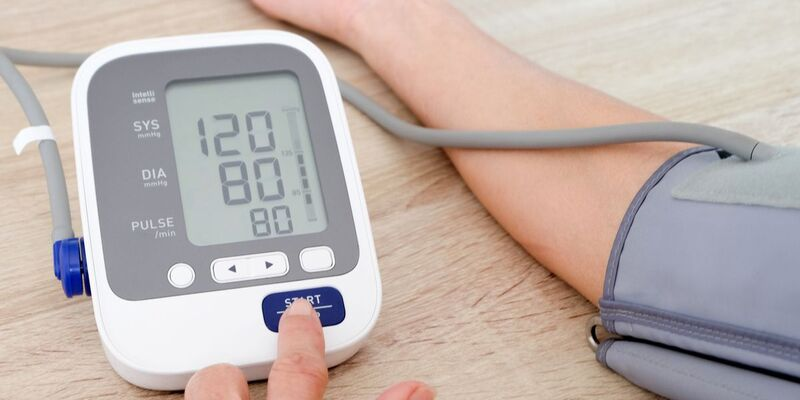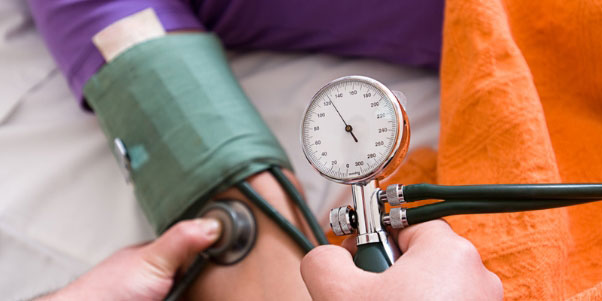High blood pressure, or hypertension, is a significant risk factor for cardiovascular disease, stroke, and kidney disease. It is estimated that one in three adults in the United States has high blood pressure, but many are unaware of their condition. Regular monitoring of blood pressure is crucial in preventing the development of these severe health problems. While it is recommended to have periodic blood pressure checks with a healthcare professional, taking readings at home can be a convenient and effective way to monitor blood pressure. Not only does it save time and money, but it can also help individuals to detect changes in blood pressure levels early on, allowing for timely intervention. This article provides a detailed guide on how to check blood pressure at home, including explanations of the different types of blood pressure readings, how to prepare for a lesson, and tips for interpreting your results.
What Is Blood Pressure
The pressure of the blood on the arterial walls as it travels through the body is known as blood pressure. It is measured in millimeters of mercury (mmHg) and recorded as two numbers: systolic and diastolic. When the heart contracts and blood is pumped out (during the systolic phase), blood pressure is higher compared to when the pulse is at rest (during the diastolic phase). Under 120 over 80 is considered normal for adults. High blood pressure, or hypertension, is defined as having consistent readings above 130/80 mmHg. Blood pressure can vary throughout the day and can be affected by stress, physical activity, and diet. Accurate measurement of blood pressure is crucial for diagnosing and managing hypertension, and regular monitoring can help individuals maintain good health and prevent serious health problems.
How To Prepare For Taking A Blood Pressure Reading At Home
It is important to prepare appropriately to ensure an accurate blood pressure reading at home. Before taking a reading, individuals should avoid smoking, drinking caffeine, and engaging in physical activity for at least 30 minutes. It is also important to sit quietly and relax for 5-10 minutes before taking a reading. Choose a comfortable, quiet environment and sit with your back straight, feet flat on the floor, and arms supported at heart level. Remove tight clothing or jewelry that might interfere with the reading. It is also essential to use a properly calibrated blood pressure monitor and follow the manufacturer's instructions. Finally, it is recommended to take multiple tasks at different times of the day to ensure accuracy and to track changes in blood pressure levels over time. By taking these steps, individuals can ensure that their blood pressure readings are accurate and helpful in monitoring their health.
How To Take Your Blood Pressure Reading

Taking a blood pressure reading at home is a straightforward process. Once you have prepared yourself and your equipment, follow these steps:
- Sit comfortably with your back straight, feet flat on the floor, and arms supported at heart level.
- Turn on the blood pressure monitor and place the cuff on your upper arm, following the manufacturer's instructions.
- Press the start button and wait for the cuff to inflate and deflate, measuring your systolic and diastolic pressure.
- Record the readings and repeat the process at least two more times, waiting a few minutes between tasks.
- If you want a true reading of your blood pressure, average the teachings.
- It is important to note that taking blood pressure readings at home is not a substitute for regular check-ups with a healthcare professional. If you have concerns about your blood pressure or if your tasks are consistently high, it is essential to consult a doctor for further evaluation and treatment.
Interpreting Your Blood Pressure Results
How to interpret your blood pressure readings. Please discuss what systolic and diastolic readings mean and provide a chart of normal blood pressure ranges. You should also explain what to do if your readings are high or low, including when to consult a doctor.
Tips For Maintaining Healthy Blood Pressure

Tips for maintaining healthy blood pressure. You should discuss lifestyle changes that can help lower your blood pressure, including exercise, healthy eating, and stress reduction. It would be best to discuss the importance of monitoring your blood pressure over time and doing regular check-ups with your doctor.
Conclusion
Recap the importance of monitoring your blood pressure at home and stress the importance of accuracy. It would be best to encourage readers to make normal blood pressure watching a habit and explain how it can help them maintain good health. Finally, you should offer some final thoughts on taking your blood pressure home and stress the importance of staying on top of your health.




